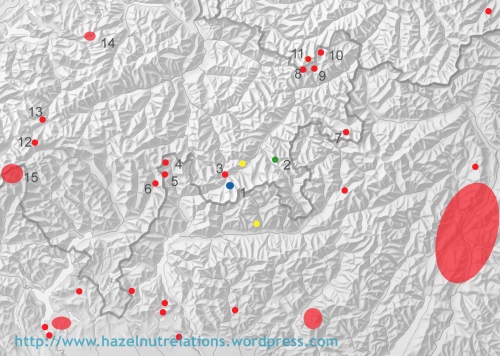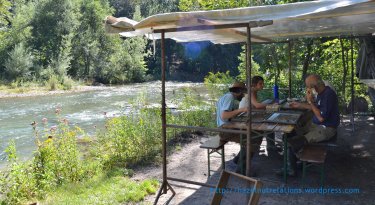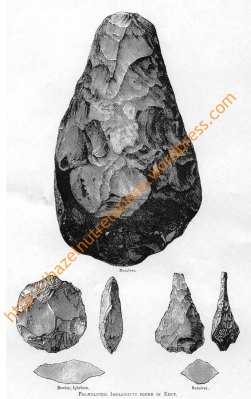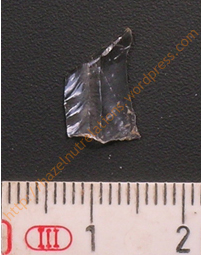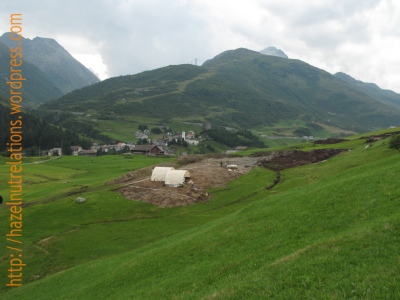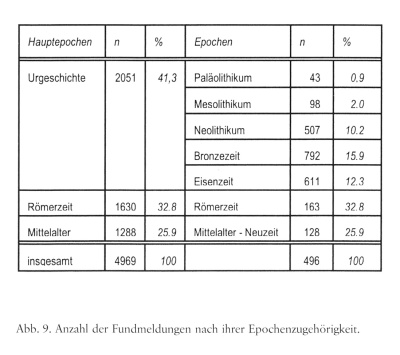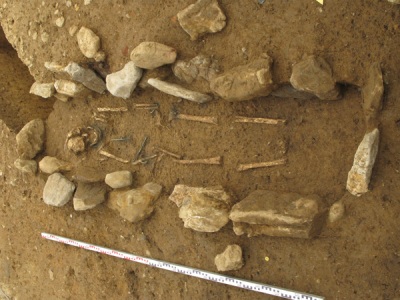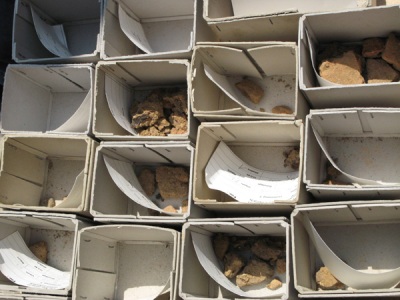At some excavations you do not really know what you are finding until you are done in the field and in a warm and cosy office again. Rescue excavations of Mesolithic sites can be like that. There might not be much stratigraphy and resources in the way of time and money are sparse. One digs out 50x50x5cm squares and the spoil gets wet sieved for finds and botanic remains.
The excavation of Hospental-Moos was a bit like that. The Urseren valley, between Andermatt and Hospental in Central Switzerland, is being re-landscaped into a holiday resort and golf course. The valley floor – ca. 1500 masl – lies at the crossroads to the Furka, Gotthard and Oberalp-passes and has long been an important valley on routes connecting various parts of the Alps. I already briefly wrote about the 2010 building brief and the partial excavation of a Late Mesolithic site (Hospental-Moos). Now it looks like we will be able to analyse and hopefully publish the results of the fieldwork as well.
Most post-excavation work will flow into the metal finds and the excavated Mesolithic site. Last Friday, I met my colleague in Zug to have a first viewing of the finds, in order to organise the post-excavation work. A large part of the affected landscape was searched with metal-detectors. The metal finds seem to spread chronologically across at least two millennia and a first look the finds-map shows how widely these are spread across the valley floor. At the same time, already now some patterns seem to be discernible. These finds will need to be stabilised and at least those that will need to be included in more detailed post-ex work will need further conservation.
The Mesolithic finds seem to date to Late Mesolithic (around 6000 cal BC). I already expected it, but it was only when I had finished a first artefact count, I truly realised what a fantastic site it is! Due to considerable time pressure, we did not do much on-site analyses and some of the excavated earth was only screened in the lab, after the actual excavation had long been finished. So, to some extend we really did not know what we were finding. The artefacts are almost exclusively made from rock crystal. It is a beautiful material, but from the point of view of a lithics analyst, they take some getting used to. They come almost exclusively from the excavated site. Only a few were found at various locations across the landscape.
So, I am very much looking forwards to the post-ex! For most of us involved, this is a bit of a side project, so it will draw itself over the rest of the year. I will write more when we really get going. At the moment I am excavating part of the Medieval and Early Modern remains of a small city in the south of the Canton of Bern. Very different! I will write more about that soon. You are also welcome to follow my Twitter feed: look for #Unterseen.


